Gomez House The Oldest Jewish Residence in the USA
Fact Paper 30
© Samuel Kurinsky, all rights reserved
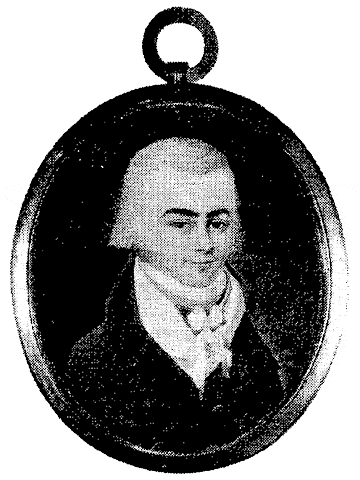
Luis Moses Gomez, Fur Trader
In the early years of the evolution of the American nation, Jewish fur traders were among the first who ventured into the wilderness. These hardy pioneers established and maintained a friendly relationship with the Indian tribes. The continuity of their enterprise depended not only on a fair and mutually beneficial association between themselves and the Indians, but on the continuing freedom of the Indians to live and hunt in their ancestral lands.
At that early time, the possibility that the Indians were descended from the Ten Lost Tribes of Israel was seriously discussed and considered in the Sephardic community of New York. Similarities between the religious rites of the two cultures and of language peculiarities were taken as evidence that, indeed, a relationship existed which could not be ascribed to coincidence. Some rabbis insisted that Indians be dealt with as fellow Jews.
It was argued that neither Hebrew nor the Indian languages make use of a comparative or superlative degree. It was noted that both languages make considerable use of hyperbole and metaphor. While such language parallels were not in themselves significant, they reinforced other cultural parallels of greater import.
It was said that the Indians worshiped a great spirit they called Yohovah. Indian holy days fell out In the spring and the fall, corresponding to the Jewish Passover and Succoth. The Indians underwent a two-day fast period, much as the Jews did on the Day of Atonement.
It was observed that Indians had high priests, one of whose functions was the conduct of puberty rites. The Indians sense of purity, both in personal terms and in their diet, was emphasized, particularly because the Indians considered that the eating of certain animals was taboo.
Finally, similarities between the Indian and the ancient Hebrew counting systems and the fact that the Indians employed a lunar calendar convinced many that, indeed, the two peoples were related.1
The belief that the Indians were the lost tribes of Israel persisted into the nineteenth century. Early in that century, Mordechai Noah, an erstwhile sheriff of New York, newspaper publisher, and the world's first Zionist, purchased a 17,000 acre tract on Grand Island in the Niagara River to be a temporary homeland for the Jews until they could fulfill the foretold return to Jerusalem. Noah launched a massive publicity campaign, announcing a great ingathering to be held on the Niagara frontier on September 15, 1825. He invited the Indian chiefs of the territory to participate as representatives of the ten lost tribes. Ararat, the City of Refuge on the Niagara was stillborn. Only the Indians attended the ceremony!2
When farmers, miners, and the railroads encroached on Indian territory, conflicting interests led to wars. As the railroads branched out across the country, a horde of hunters spewed into Indian territory. They were a different breed; they proceeded to deplete the continent of its valuable, fur-bearing wildlife. The Indians became a hindrance rather than an asset.
One need not travel far to the west to pick up the trails of pioneer Jewish fur traders. In New York State in the late 1600's, for example, Joseph Brown, "a trapper and trader of the Jewish persuasion," was pursuing his activities in the wilderness of what is now Orange County, New York, a mere 20 miles from the Big Apple!3
A few years later, a Sephardic Jew, Luis Gomez, purchased land along the Hudson River in that same region. His son built a house on the property, and the family spent the winters trading with and maintaining a friendly, mutually advantageous relationship with the Algonquin Indians of the northeastern United States. The house, along with an adjoining millhouse and dam, stands today as the earliest surviving Jewish residence in the United States.
The Gomezes were the most unlikely woodsmen. They were an aristocratic family more at home with royalty than with beavers and muskrats.
The Saga of the Family Gomez
The Gomez family endured for many generations as Marranos in Spain through the worst period of the Inquisition because they rendered invaluable services to the royal house. Most of their powerful relatives were not as fortunate. The Gomez family was connected by marriage to the Santangels, a rich and powerful family with vast holdings in Aragon. Since the confiscation of assets followed condemnation for heresy, the considerable wealth and property of the Santangels rendered them particularly vulnerable.
"Jaime Martin Santangel was burned in 1488; Doñosa de Santangel six months later. Simon de Santangel and his wife, Clara, betrayed by their own son, were burned in Lérida in 1490. A more understandable betrayal occurred when one of the daughters of Luis de Santangel, along with her lover, was turned over to the Inquisition by her husband. A particularly grisly episode of the Inquisition took place in Grenada in 1491 when Alfonso Gomez, together with his wife, the former Violante de Santangel, were all posthumously condemned of heresy and their families exhumed and burned in public."4
Some of the Gomezes survived the expulsion from Spain in 1492. Not having the vast holdings of the Santangel family, there was less reason to persecute them. But the family had some assets that could not be expropriated: literacy and international contacts. These attributes were invaluable to the Spanish hierarchy, and, indeed, to the hierarchies of all Christendom.
Since the fifth century of the Common Era, Jews had been driven from the trades and from possession of land, a process that climaxed under the Inquisition. Dispersed throughout the Christian as well as the rest of the civilized world, the Jews found their situation both a boon and a bane. Without a country of their own, they maintained contact with their relatives or compatriots throughout the Diaspora. Sharing a common language and interests, they were able to issue letters of credit for shipments to distant ports, and be secure that they would be honored weeks, and even months later. No other group could match these advantages for reliable international intercourse.
The world of commerce became the province of the Jews, and their interests in international shipping, banking, and trade burgeoned. As a consequence, the Christian hierarchies generally found it pragmatically convenient to put aside Christian constraints and employ well-connected Jews as counselors and commercial attaches.
The Gomez family was particularly well positioned and suited for this purpose. Through the century and a half following the most virulent period of the Inquisition, members of the family became counselors to royalty. Isaac Gomez, born in Madrid in 1620, was an astute financier and became a favorite advisor of Philip IV.
The king was a profligate womanizer with a mentally retarded son. He was so dependant on the counsel of Gomez for the conduct of his affairs, that, clearly aware of Isaac's secret Jewish adherence, he promised Isaac that should he hear that Inquisitors were on his case he would issue a coded warning. At dinner, surrounded by servants, some of whom were likely to be spies for the Inquisition, he would say, "Gomez, the onions begin to smell."
The fateful day came when the sentence was uttered. Isaac smuggled his wife and son out of the country, but was himself caught in the clutches of the Inquisitors. He was thrown into prison for several years until he managed to bribe his way to freedom, fleeing over the Pyrenees to join his family in France.
Under the Edict of Nantes, signed in France by King Henry IV in 1598, persecuted Jews and Huguenots could seek refuge in France. The intervention of the Inquisition under Cardinal Richelieu during the reign of Louis XIII rendered this avenue of escape untenable. His son, Louis XIV, attempted to hold the church at bay, and for the next few years, Jews and Huguenots were again able to find refuge in France. The Gomez family was among them.
Unfortunately, the church proved too powerful; a new reactionary period spread through continental Europe as a result of the revocation of the Edict of Nantes in 1685 by Louis XIV. The French Huguenots and the Jews fled in anticipation of renewed persecution. Isaac moved to London, where he had friends and family.5
Thanks to connections he had made, Isaac was able to purchase an official "Letter of Denization," which gave the Gomezes British citizenship rights apart from that of holding public office. It can be presumed that the process was expedited by the desperate need of the English for capital for pursuit of "Queen Anne's War," (otherwise referred to as "The War for the Spanish Succession,") between France and England.
Isaac's son Luis, decided he had enough of Europe, and decided to strike out to the New World.
"When word reached New York that a member of the exalted Gomez clan was on his way, there was a considerable stir within the little community of Sephardim - particularly among the mothers of unmarried and eligible daughters, who immediately began receiving instructions on how to treat a Gomez. It was said that the Gomezes were so grand that they still used their titles, and had to be addressed as "your Grace," and "your Ladyship." (This was true; they did.) Young Louis Gomez, however, disappointed the mothers by stopping in Jamaica, where he met, by prearrangement with her family, the daughter of another high-placed family, Esther Marques, and married her."6
The young couple arrived in New York in 1696. Luis first opened a store in Lower Manhattan, dealing in general merchandise. Recognizing an opportunity to expand his commercial horizon he soon began to trade in wheat across the Atlantic. It proved to be a highly profitable product, one which made him a rich man. Lewis (the anglicized name he adopted) wrote to his father that his dealings in wheat was being done "on an enormous scale." In 1710, his funding a" memorial" (Birmingham suggests that this may have been a sort of bribe) led the city council to approve shipment of wheat to Madeira, a privilege that had been denied to all others.
At the age of fourteen, the third of Lewis's six sons, Daniel, joined his father in the West Indies trade. As his father had done before him, Daniel met and married a member of an ancient Sephardic family in Jamaica, Rebecca de Torres. After five years she died in childbirth, and Daniel subsequently found another bride in Curacao, Esther Levy. His brother, Benjamin, likewise found a bride in Jamaica.
Daniel launched a highly successful career as a trader back and forth across the Atlantic. His business branched out from Madeira to Barbados, Curacao, London and Dublin. Daniel dealt mainly in wheat, albeit he also traded in the whole gamut of goods, including "stockings, suspenders, ginger, buttons, nightshirts, gunpowder, swords, preserved goods, silk, and sailcloth." However, seeking to a product he could concentrate on and create his own market for, he determined that furs were such a product
"Daniel was, in fact, one of the very first to consider the vast wilderness of the continent that lay on all sides of him, and the numbers of fur-bearing animals that lived there. Daniel was an American pioneer in a business that has consumed adventurers from the time of the Golden Fleece. He was also the first in America to see how the native Indians could be used in this trade as trappers and hunters."7
From their advantageous position in the British and Dutch West Indies, the Gomez family also became heavily involved in the fur trade: "The Gomez family had agents to supply West Indian sugar and other Caribbean resources to import directly into New York City. The family was able to market beaver pelts from Canadian, as well as British colonists in the Champlain Region." 7
Beaver pelts were a particularly profitable product. Tri-corner, satiny-looking beaver hats were made almost exclusively by colonial hatters; they were another particularly lucrative product and in great demand by the American and European middle and upper classes. Intent upon establishing his own trading post. Lewis Moses Gomez took a boat trip up the Hudson. At a beautiful cove along the western shore of the Hudson, nestled into a mountain side just north of the present Tappan Zee Bridge, he observed a great gathering of Indians. He learned that this was a traditional meeting grounds of the Algonquin Indians from an extended section of present-day New York, Pennsylvania and New Jersey. For centuries the Algonquins had regularly met here along the Hudson for social, religious and trade activities.
A local accounting of Henry Hudson's voyage of discovery up the Hudson River in 1609 includes a sojourn of the explorer off the rocky headlands of the site: "...he anchored off the point and watched the Indians performing one of their mystic ceremonies, dancing around a tall fire." The exotic scene observed by Hudson, and evidently by subsequent adventurers into Indian territory, launched a persistent myth. The subsequent Dutch settlers in "New Amsterdam" at the mouth of the Hudson, imagined that all sorts of heathen rites and devilish deeds were being performed. They dubbed the area De Deful's Dans Kammer (The Devils Dance Chamber).
An old ditty, designed to frighten adventuresome children from visiting the area, went:
For none that visit the Indian's den
Return again to the haunts of men,
The knife is their doom, oh sad is their lot,
Beware! Beware of the bloodstained spot!"8
The dreadful reputation of the site accrued to Lewis's advantage, inasmuch as the real estate values of the region reflected the fears of the settlers. As a Jew, Lewis held little regard for the Christian superstitions. He sailed up the river in Henry Hudson's wake to survey the area around the beachhead where the Algonquins gathered.
Lewis Gomez found an active spring and a creek with a powerful downhill flow at the site. It was perfectly suited for the installation of a mill. He consulted with the Indians of the area, striking a pact with them. He then obtained a grant of land from the English government under Queen Anne for six thousand nine hundred acres bordering on the present towns of Marlboro and Newburgh.
In 1710, Lewis's son Daniel Gomez began buying additional land for the family. The first purchase of twenty five hundred acres comprised a good portion of the present city of Newburgh. Lewis divided all the property obtained into sevenths for members of the family, but continued to pay the taxes for all of it. The Algonquin's trail to their Hudson River beachhead ran straight through the thickly forested Gomez property.
In 1714 Daniel Gomez erected a house on his eight hundred acre virgin tract Native stone was used for walls up to three feet thick. A large central room was flanked by two smaller rooms, under which two large cellars served for storage. One contained flint, gunpowder, shot, tools, knives, hatchets, beads and other trinkets, as well as guns and whiskey; the other cellar room contained the furs obtained in trade: beaver, otter, lynx, muskrat, black fox, and mink.
Bartering took place in the late fall and winter before the central room's huge fireplace, a massive structure eight feet wide and six feet deep. As many as thirty Indians could gather around its blazing fire in the bargaining process. For the next thirty years, Daniel Gomez traded his goods in that comfortable environment for valuable furs "which he sent, on his own vessels, to Spain and Portugal. At the time of his death he was one of the wealthiest and most respected of New York's merchants."9
Daniel and his two sons, and eventually his wife, spent the fall and winter trading season at the house. "The lonely fort became known as "the Jew's house," and local records refer to Daniel only as "Gomez the Jew." Until recent years the stream that ran by Daniel Gomez' house... was designated on local maps as "Jew's Creek."10
The Gomez family maintained good relations with their Indian neighbors throughout the period of their residence in the area. Stephen Birmingham records that the rabbis in the Sephardic synagogues of the day, considering the possibility that the Indians were descendants of the Ten Lost Tribes of Israel, enjoined their congregations against mistreating or exploiting the local Indians.
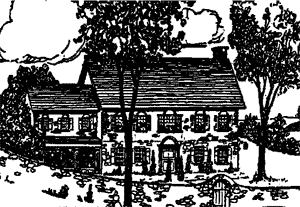
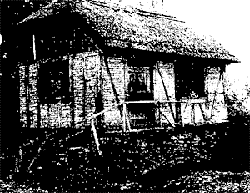
Daniel Gomez took the possibility of related ethnicity seriously "I am able to understand the Indian thought," Daniel wrote to a friend.
In New York, Lewis Moses Gomez became a philanthropist and was elected parnass of the Shearith Israel synagogue in 1728. In addition to the considerable support given to the Jewish community and the synagogue, he was instrumental in raising funds with other New York families - Jews prominent among them - to purchase the steeple for Trinity Church. He
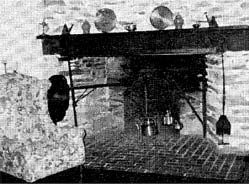
continued his philanthropies until his death in 1740.
Daniel was an enthusiastic American patriot, despite the fact that, in 1737, the right of Jews to vote for the assembly was denied. In 1740, the year of his father's death, a Naturalization Act was passed. Daniel immediately took advantage of its provisions and became a voting citizen. Like his father before him, Daniel became a parnass of the Shearith Israel synagogue in New York, and supported it with what was then a significant sum of fifteen pounds a year.
The expansion of the Gomez enterprises reached into Liverpool. An advertisement in the New York Gazette in 1751 offered a variety of products to his American clients: "... earthenware in casks and crates, Cheshire cheese, loaf sugar, cutlery ware, pewter, grindstones, coals and sundry other goods too tedious to mention."11
When the Revolutionary war broke out, the occupation of New York by Hessian and British troops caused the Jews concern, for two-thirds or more of the Jews were solidly in support of the revolution, despite the fact that such a position was against the commercial interests of many of them. The synagogue was obliged to close its doors, and Daniel was among the many Jews who fled to areas held by the revolutionaries. He and his family moved to Philadelphia, the heart of the American patriotic movement, where he became one of the founders of a new Sephardic congregation, the Mikveh Israel.
Moses Gomez, another son of Daniel, remained behind to man the house on the Hudson, which now served doubly as a fort. Left on his own, he hired "a teen-age German immigrant as an apprentice, and was teaching the youth to pound the pelts of beaver, otter and mink that were making their way down Jew's Creek in Indian canoes. The young man's name was John Jacob Astor - then spelled Ashdor - and the Gomez firm was paying him a dollar a day." 12
The association with Gomez later gave rise to unproven rumors that the Astors are of Jewish descent. Gomez, the scion of a family that was considered nobility, was disdainful of the atrocious manners of this crude butcher's son. He detested his heavy German accent, his indecipherable handwriting, and his propensity for wiping his hands on his shirt after meals. Moses finally dismissed the uncouth youth, and wrote to his father: "This fool has no head for this business absolutely."
Stephen Birmingham comments that this was a "remarkably poor appraisal of the man who would found the American Fur Company and become America's first monopolist."
The direct Gomez line, alas, has virtually died out in Jewish circles through intermarriage, conversion and assimilation. Descendants of the Gomez family, however, include illustrious figures. One of the great jurists, Justice Benjamin Cardoza, was one such Gomez descendant, and, at the other end of the cultural spectrum, the poet, Emma Lazarus, was another.
The Gomez house stands today as the oldest house in Orange County in the National Register of Historic Places and the earliest surviving Jewish residence in North America. It is being restored as a museum, and is well worth a visit. A large number of Gomez descendants are contributors to the restoration and maintenance of the property, now being overseen by the American Historical Society.
The remarkable history of the house and property does not end with the Gomez family. Daniel Gomez sold the house and 600 acres of land in 1772 to Wolfert Acker who found the facility well suited for a grist mill and saw mill. Acker, an immigrant from Holland, became a leader of the militia during the revolution. General Washington's headquarters was in Newburgh from 1782-83, and Wolfert went back and forth from the house to Washington, carrying orders for the militia.
After the war Acker added a brick factory, and started a ferry across the Hudson. His sloops delivered bricks up the Hudson to Albany, and down to New York City. He died in 1799. The property passed to his son, William.
The introduction of steam boats after its invention in 1807 by Robert Fulton, brought about a great increase in traffic and trade along the Hudson River., and displaced Acker's sloops. The burgeoning traffic and accessibility to the beautiful Hudson Valley hills enticed the wealthy elite of New York to build their homes on panoramic sites overlooking the river from both its shores. The Gomez house and property was sold again, this time to one such wealthy man, Edward Armstrong.
Armstrong was not interested in the Gomez house but in a site on a rise that had a view of the river on three sides. Armstrong built a classic Greek pillared house on the hill, raised sheep and horses, wrote poetry and played the violin. His wife was a not inconsiderable painter. Sadly, the house was torn down. The only surviving element is a pillar that now can be seen at the nearby Storm King Art Center.
Edward's son, Harry was an adventurer who prospected for gold in California in 1849. After marrying a southern Belle, Sara Matilda Grayson, the couple added a kitchen wing to the Gomez Mill House and settled into it. They raced horses and raised hunting dogs. After their only child, Emily, fell into Jew's Creek and drowned, the property was sold to an artist and craftsman, Dard Hunter.
Dard ran away from home as a teenager, and traveled the country as a magician's assistant. He settled down to study at a center for people in the Arts and Craft Movement. He became enamored with the production of beautiful paper and calligraphy, and after purchasing Gomez house, installed a paper mill. For four years the most exquisite books, papers, and printing were produced at Gomez Mill House. Today Dard's books and paper are collector's items of great value. Dard moved to Ohio where he continued his extraordinary career, and the Gomez house fell into disrepair.
The subsequent acquisition of the Gomez Mill House by Mildred and Jeffrey Starin was most fortunate for Judaic, and indeed, American history. Mildred deVito was a young girl when she first saw Gomez Mill House, and became intrigued with it and its history.
" Mildred and her young husband, Jeffrey Starin, got a G. I. loan. They used the money to make a down payment on the Gomez Mill House and 28 acres of land."
It took much time, money and love to restore the house and refurnish it. "The old four-poster bed of the Armstrong family was restored. A candelabra that may have belonged to Luis Moses Gomez was found and polished. Piece by piece the past of Gomez house began to come to life. But there was a long way to go."14
Mildred sought help from the descendants of the owners of the property and succeeded in interesting them to make the Gomez Mill House a museum. In 1985 Mildred turned house over to the Gomez Foundation for Mill House.
Mildred succeeded in placing the Gomez Mill House on the National Register of Historic Places.
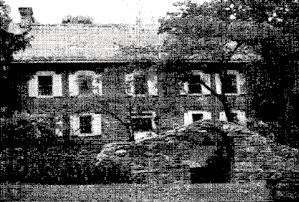
Presently the Gomez Mill House is being administered by the American Historical Society. Visitors to the site will be treated to an excellent, gripping, and most educational, video on the history of the house and of the Gomez family.
"I have been a guardian," wrote Mildred, "of stones, bricks, and timbers that have been silent witness to a spirit of freedom and understanding in racial and religious matters. Through 267 years of American history, Indians, Jews, Dutchmen, Englishmen, patriots, farmers, and (business men) have met, sat, lived, loved, and even fought in this house. ...It will surely stand as a memorial to those Americans who, while striving for the new, did not tear down the old, and recognized the past as the foundation for the future."
Notes
- Stephen Birmingham, The Grandees, Harper & Row. 1976, p. 86.
- For a fuller exposition of the remarkable history of Mordechai Noah, refer to HHF Newsletter 54, and to Seymour Kurtz, Jewish America, McGraw Hill, 1985.
- Marc Newman, "Louis Gomez, Hebrew Patriarch of Orange County," Orange County Times Past,, Salisbury Hill, Publishers, Sept. 1996.
- Birmingham, Ibid., p. 84.
- See HHF Newsletter 63, Nov. 1996, "Parallel Paths, Part 3" for the curious parallels between the movement of the Huguenots and the Jews, and the possibilities that many Jews may have proclaimed themselves as Huguenots to enter England when Jews were banned from that country.
- Birmingham, Ibid., p. 86.
- Birmingham, Ibid, p. 88
- Newman, Idem..
- Birmingham, Ibid., p. 89.
- Leon Huhner, The Indian Trader, New York, 1915.
- Birmingham, Ibid., p. 91.
- Birmingham, Ibid., p.87.
- Birmingham, Ibid., p. 92.
- Quotes are from a "Teacher's Guide," issued at Gomez House.
